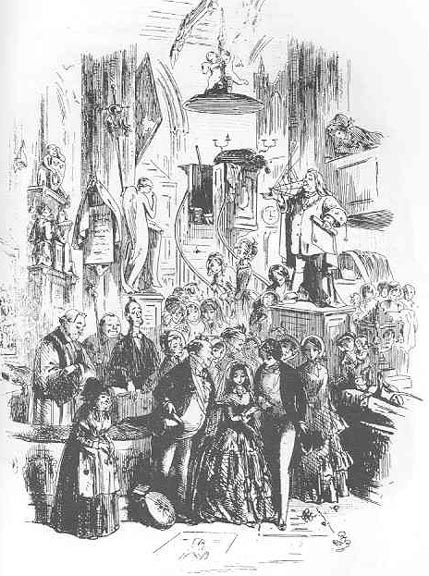Hablot Knight Browne (Dicken's Illustrator)
I decided to start this blog because there doesn't seem to be any good resources out there that talks about the great men and woman of the world of Illustration. I am an illustrator, and I know how important it is to know your roots, why today we create images, draw lines, colour, the way we do. This blog will be a bit of an exploration for me in the history & lives of many illustrators I am interested in, and will cover both historical legends, and current contemporary heroes.
I decided to start with Hablot Knight Browne, the man who made his name illustrating Dicken's stories. In many ways Illustration itself is linked to books, and Dicken's books were the first books to be really avaliable and accessable to the middle and (of those who could read) lower class, which was appropriate as many of his novels contained themes of social reform and questioning of popular society.
Hablot Browne was born in 1815 (a long time ago). He met Dickens on 1836, at 21 years of age. He had already been working as an artists, and Dicken's was looking for an artist for his novel Pickwick, and after sumbitting his work to the publisher's office, he was given the job. Below is one of the drawings he did for Pickwick (he signed the illustration as Phiz)
Below I have tried to enhance the illustration a little to show the quality of line and form even so young in his career. This loose precision was common in the times Browne was illustrating in, notice the angle of line he used, and the depth of form he was able to achieve. This, in combination with his great sense of character, storytelling and expression, he created great pictures.
Browne and Dickens became good friends and traveled occasionally together. Browne ended up illustrating ten of dicken's books, including David Copper field, of which he is most famous for. His strong sense of story telling made him a perfect illustrator to Dicken's character-driven Novels. Below is the cover pages from A Tale of Two Cities (click on the image to take a closer look). Notice how he lightly details the backgrounds of the group of people under the tree, letting the detail fade out in a circular form. There is a sense of drama in the piece, as the young man with messy hair stands in shadow with a flower in his hand. The young faces are elegant and oval, with sweet (tragic) features. The sense and theme of the novel is apparent without reading the first paragraph of the novel.
As well as illustrating for Dickens, Brown drew plates for more than twenty of Charles Lever's novels, and was also famous for illustrating books by William Ainsworth. Browne illustrated until 1867, when he suffered from an illness (a stroke) which temporarily paralyzed him. He recovered and went back to work, but his health gradually worsened. He died in 1882.
Below are some images I have gathered by this great artist. His sense of story telling and focus is very interesting when considered closely, and these pictures show us another world, over 150 years ago, yet filled with people who we can still sympathize with and understand.








No comments:
Post a Comment